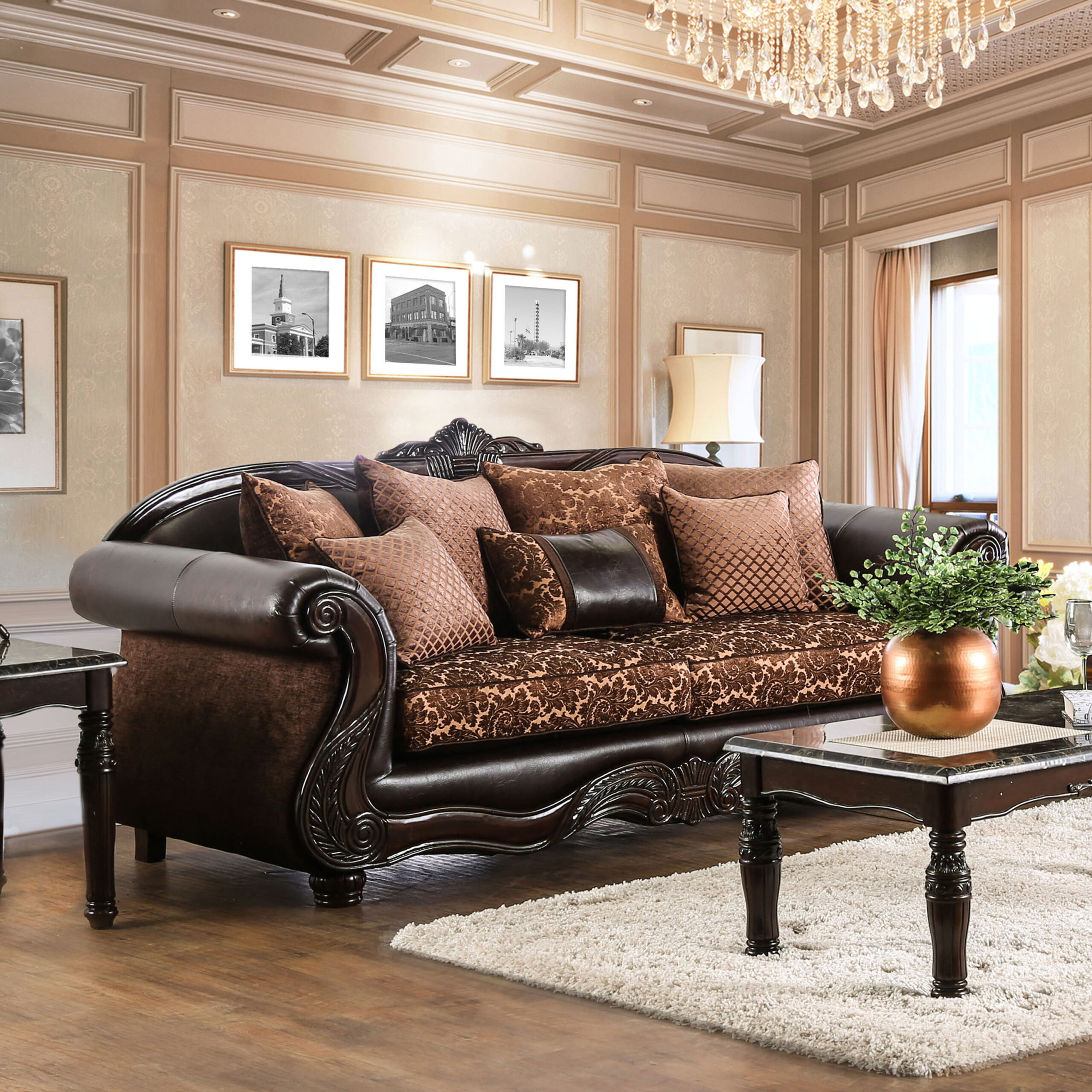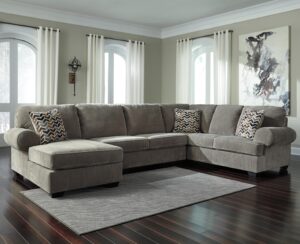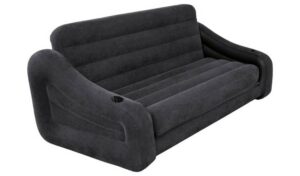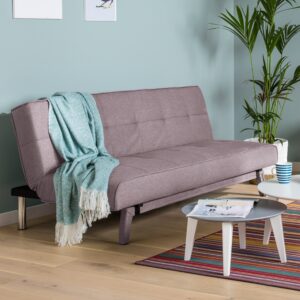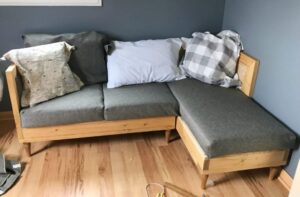When it comes to choosing a sofa for your home, one of the most important decisions you’ll have to make is the type of upholstery. While there are various options available, two of the most popular choices are leather and cloth. Both materials have their own unique characteristics, advantages, and disadvantages. In this article, we will delve into the world of leather and cloth sofas, exploring their key features, maintenance requirements, durability, comfort, and style. By the end of this article, you’ll have a better understanding of which type of sofa is the right fit for your home.
1. Leather Sofas: Timeless Elegance and Durability
Leather sofas have long been associated with luxury and sophistication. Their classic appeal and durability make them a popular choice among homeowners. Here are some key features of leather sofas:
- Quality and Durability: Leather is a highly durable material that can withstand everyday wear and tear. It is resistant to stains, spills, and scratches, making it an excellent choice for households with children or pets.
- Timeless Style: Leather sofas exude an air of elegance and sophistication. They have a timeless appeal that can complement a variety of interior design styles, from traditional to modern.
- Comfort: Leather upholstery tends to soften and become more comfortable over time. The natural breathability of leather allows it to adjust to your body temperature, providing a cozy seating experience.
- Easy Maintenance: Leather sofas are relatively easy to clean and maintain. Regular dusting and occasional conditioning can help preserve their natural beauty and extend their lifespan.
While leather sofas offer many advantages, they also have a few drawbacks to consider:
- Cost: Leather sofas are generally more expensive than their cloth counterparts. The price can vary depending on the quality of leather used.
- Temperature Sensitivity: Leather can feel cold in winter and hot in summer, which may not be ideal for those living in extreme climates.
- Potential Fading: Direct sunlight can cause leather to fade over time. Placing a leather sofa near a window without proper UV protection may result in discoloration.
2. Cloth Sofas: Versatile and Cozy
Cloth sofas, also known as fabric sofas, offer a wide range of options in terms of colors, patterns, and textures. They are a versatile choice that can match any style or decor. Let’s explore the key features of cloth sofas:
- Style Variety: Cloth sofas come in an extensive range of styles, colors, and patterns. Whether you prefer a modern, minimalist design or a cozy, traditional feel, there’s a cloth sofa to suit your taste.
- Comfort: Fabric upholstery tends to be softer and more cushioned, providing a plush seating experience. Some cloth sofas also come with additional features like built-in recliners or adjustable headrests for added comfort.
- Temperature Regulation: Unlike leather, fabric does not retain heat as much, making cloth sofas more suitable for warmer climates or those who prefer a cooler seating option.
- Affordability: Cloth sofas are generally more budget-friendly compared to leather options. The price can vary depending on the type of fabric used, but there are plenty of affordable choices available.
While cloth sofas have their advantages, they also have a few considerations to keep in mind:
- Maintenance: Fabric upholstery is prone to staining and may require regular cleaning or professional treatment. Different types of fabric have specific cleaning instructions, so it’s essential to follow the manufacturer’s recommendations.
- Durability: Cloth sofas may not be as resistant to wear and tear as leather sofas. However, high-quality fabrics and proper maintenance can help extend their lifespan.
- Potential Fading: Just like leather, certain fabrics may fade when exposed to direct sunlight. It’s advisable to use curtains or blinds to protect your cloth sofa from excessive sunlight.
3. Finding the Perfect Balance: Leather and Cloth Combinations
If you can’t decide between the elegance of leather and the versatility of cloth, why not consider a sofa that combines both? Leather and cloth combinations offer a unique aesthetic appeal and can be customized to suit your preferences. Here are some popular options:
- Leather and Fabric Mix: Many sofas feature a combination of leather and fabric upholstery. For example, the cushions and backrest can be made of cloth, while the arms and base are covered in leather. This allows you to enjoy the best of both worlds and create a visually appealing contrast.
- Leather with Fabric Accents: Another option is to choose a leather sofa with fabric accents. This can be in the form of decorative throw pillows or removable fabric covers for added comfort and style.
By combining leather and cloth, you can enjoy the durability and elegance of leather while adding a touch of softness and versatility with fabric elements.
4. How to Choose Between Leather and Cloth Sofas
Deciding between a leather and cloth sofa can be challenging, as both options have their own merits. Here are some factors to consider when making your decision:
- Style and Aesthetic: Think about the overall style and aesthetic you want to achieve in your living space. Leather sofas generally lend themselves well to more formal and traditional settings, while cloth sofas offer more flexibility in terms of colors and patterns.
- Budget: Consider your budget and how much you are willing to invest in a sofa. Leather sofas tend to be more expensive, but they also offer long-term durability and timeless style.
- Comfort: Take into account your personal preferences for comfort. Leather sofas can be firm initially but tend to soften and mold to your body over time. Cloth sofas, on the other hand, offer a softer and more cushioned seating experience.
- Maintenance: Evaluate the level of maintenance you are willing to undertake. Leather sofas generally require less cleaning and maintenance compared to cloth sofas, which may require more frequent care and professional cleaning.
- Lifestyle and Usage: Consider your lifestyle and how you plan to use the sofa. If you have children or pets, leather sofas may be a more practical choice due to their durability and stain resistance.
Ultimately, the choice between a leather and cloth sofa comes down to your personal preferences, budget, and lifestyle.
5. Conclusion
Choosing between a leather and cloth sofa is a decision that will impact the overall look, comfort, and durability of your living space. Leather sofas offer timeless elegance, durability, and easy maintenance, while cloth sofas provide versatility, comfort, and affordability. By considering factors such as style, budget, comfort, maintenance, and lifestyle, you can make an informed decision that suits your needs. If you’re still undecided, you can also explore the option of a leather and cloth combination to enjoy the best of both worlds. Ultimately, the perfect sofa is one that reflects your personal style and brings comfort to your home.
FAQs
1. Can I clean a leather sofa with water?
It is generally not recommended to clean a leather sofa with water, as it can cause the leather to dry out and potentially crack. Instead, use a specialized leather cleaner or follow the manufacturer’s instructions for cleaning and maintenance.
2. Are fabric sofas more prone to staining?
Fabric sofas can be more prone to staining compared to leather sofas. However, many modern fabric sofas come with stain-resistant treatments that can help repel spills and make cleaning easier. It’s important to follow the manufacturer’s care instructions to maintain the fabric’s stain resistance.
3. Do leather sofas require conditioning?
While conditioning is not always necessary, it can help maintain the suppleness and longevity of leather sofas. Conditioning products specifically designed for leather can help prevent drying and cracking, especially in drier climates. Follow the manufacturer’s recommendations for frequency and application methods.
4. Can I change the upholstery of my sofa?
In some cases, it may be possible to change the upholstery of your sofa. However, it’s important to consult with a professional upholsterer to assess the feasibility and cost of the project. Keep in mind that altering the upholstery may affect the overall look and comfort of the sofa.
5. How long do leather and cloth sofas typically last?
The lifespan of a leather or cloth sofa can vary depending on various factors, such as the quality of materials, usage, and maintenance. Generally, a well-maintained leather sofa can last for 15-20 years or more, while a fabric sofa may have a lifespan of 7-15 years. Regular cleaning, proper maintenance, and avoiding excessive wear and tear can help prolong the lifespan ofboth leather and cloth sofas.
In conclusion, choosing between a leather and cloth sofa is a personal decision that depends on your style preferences, budget, comfort needs, and lifestyle. Leather sofas offer timeless elegance, durability, and easy maintenance, making them an excellent choice for those seeking a luxurious and long-lasting piece of furniture. On the other hand, cloth sofas offer versatility, a wide range of styles and patterns, and a softer seating experience at a more affordable price point. Consider factors such as the overall aesthetic of your space, your budget, comfort preferences, maintenance requirements, and the demands of your lifestyle when making your decision.
If you’re still undecided, you can explore the option of a leather and cloth combination sofa, which allows you to enjoy the best of both worlds. Leather and fabric mix or leather with fabric accents can add visual interest and customization to your sofa choice.
Remember to care for your chosen sofa properly, following the manufacturer’s guidelines for cleaning and maintenance. Regular cleaning and maintenance will help extend the lifespan of your sofa and keep it looking its best.
FAQs
1. Can I clean a leather sofa with water?
It is generally not recommended to clean a leather sofa with water, as it can cause the leather to dry out and potentially crack. Instead, use a specialized leather cleaner or follow the manufacturer’s instructions for cleaning and maintenance.
2. Are fabric sofas more prone to staining?
Fabric sofas can be more prone to staining compared to leather sofas. However, many modern fabric sofas come with stain-resistant treatments that can help repel spills and make cleaning easier. It’s important to follow the manufacturer’s care instructions to maintain the fabric’s stain resistance.
3. Do leather sofas require conditioning?
While conditioning is not always necessary, it can help maintain the suppleness and longevity of leather sofas. Conditioning products specifically designed for leather can help prevent drying and cracking, especially in drier climates. Follow the manufacturer’s recommendations for frequency and application methods.
4. Can I change the upholstery of my sofa?
In some cases, it may be possible to change the upholstery of your sofa. However, it’s important to consult with a professional upholsterer to assess the feasibility and cost of the project. Keep in mind that altering the upholstery may affect the overall look and comfort of the sofa.
5. How long do leather and cloth sofas typically last?
The lifespan of a leather or cloth sofa can vary depending on various factors, such as the quality of materials, usage, and maintenance. Generally, a well-maintained leather sofa can last for 15-20 years or more, while a fabric sofa may have a lifespan of 7-15 years. Regular cleaning, proper maintenance, and avoiding excessive wear and tear can help prolong the lifespan of both leather and cloth sofas.
In summary, choosing between a leather and cloth sofa requires careful consideration of various factors. Leather sofas offer timeless elegance, durability, and easy maintenance, while cloth sofas provide versatility, a wide range of styles, and a softer seating experience. Both options have their own advantages and disadvantages, so it’s important to weigh them against your personal preferences, budget, and lifestyle. Additionally, you can also explore the option of a leather and cloth combination sofa for a unique and customized look. Ultimately, the perfect sofa is one that reflects your style, provides comfort, and enhances your living space.

